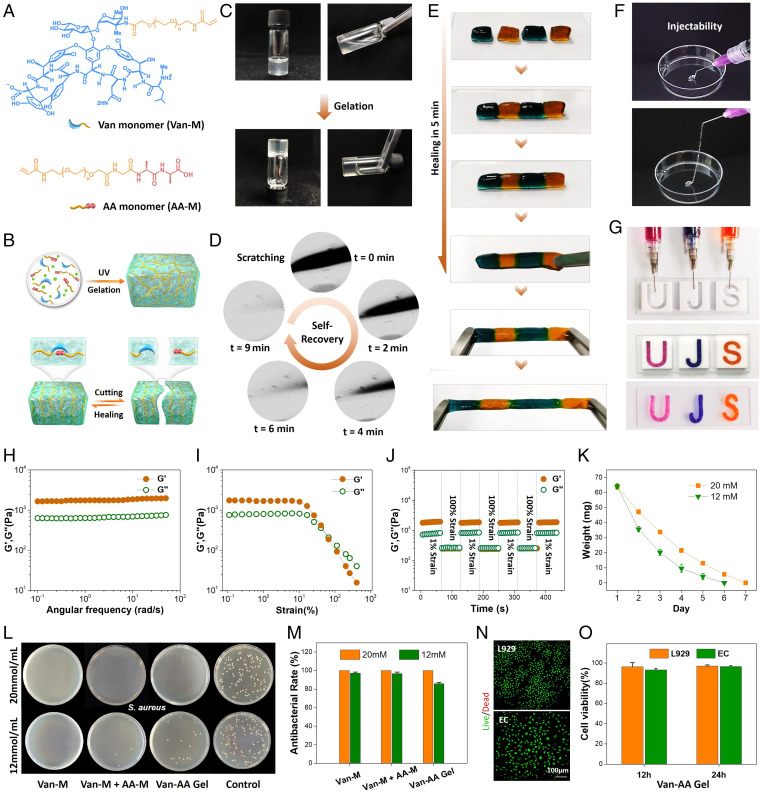Fig. 4.
Dynamic hydrogels based on reversible Van–AA interactions. (A) Structural formula of the Van-M and AA-M. (B) Schematic illustration of the Van–AA dynamic hydrogels. (C) The sol-to-gel transition after photo-initiated polymerization of Van-M (20 mM) and AA-M (10 mM). (D) The healing process of a scratched Van–AA hydrogel surface. (E) The self-healing ability of Van–AA hydrogel enables the integration of small hydrogel blocks. Block sizes: 0.5 × 1.0 cm. (F) The injectability of the Van–AA hydrogel. (G) Injection of Van–AA hydrogels for the formation of letter patterns. Teflon molds: 2.0 × 2.0 cm. (H) The dynamic oscillatory frequency sweeps (strain = 1%) of the Van–AA hydrogel. (I) The strain amplitude sweeps (frequency = 1 rad s−1) of the Van–AA hydrogel. (J) The step-strain sweeps (strain = 1 or 100%, frequency = 1 rad s−1) of the Van–AA hydrogel. Temperature: 25 °C. G′, storage modulus; G″, loss modulus. (K) The in vitro degradation profile. (L) Photos of agar plates after 24 h of incubation of S. aureus with different materials. (M) Quantitative analysis of the in vitro antibacterial efficiency of the Van–AA hydrogels. (N) The live/dead cell-staining images of L929 and HUVECs after incubation with Van–AA hydrogel for 12 h. (O) The 24-h proliferation efficiency of hydrogel-incubated cells. Cell viability of original cells was 100%. All of the above results were based on the hydrogel prepared with 20 mM Van-M and 10 mM AA-M (Van-M/AA-M = 2:1).

